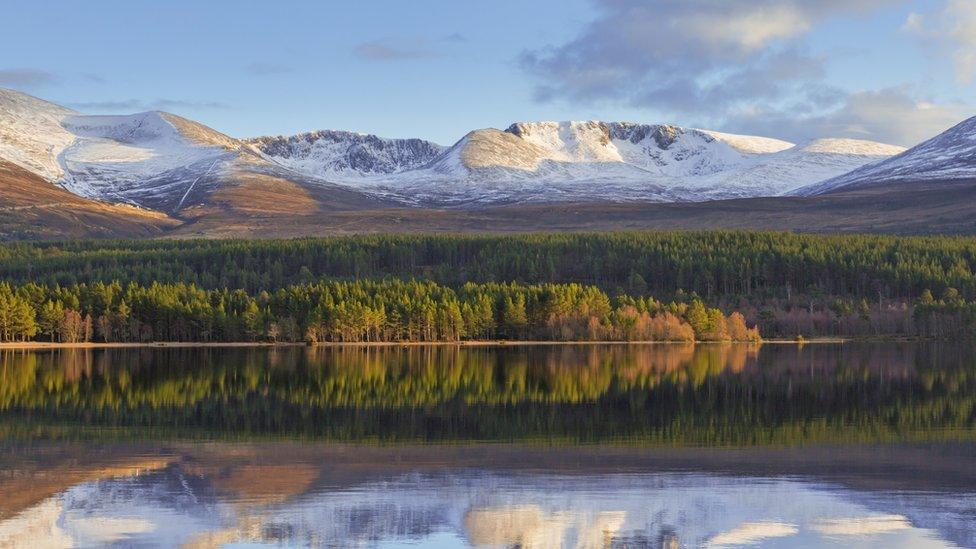UK conservation: Special project to save flowers of the Cairngorms
- Published

Conservationists are on a mission to save the rare plants of the Cairngorms.
The Cairngorms are a mountain range and national park in the eastern Highlands of Scotland and it's hoped volunteers will work alongside conservationists to protect the plants there, and their habitats, as well as see how climate change and pollution are affecting them.
Experts warn the unique wildflowers of the Cairngorms are at risk from habitat loss - meaning they won't have the right types of places to live in - as well as .
The special project will focus on rare species such as the one-flowered wintergreen and the twinflower, which will be moved to areas they can grow better in.
The team want to move twinflowers like these to areas that they'll grow better in
More than 500 animal species 'on brink of extinction'
There will also be work to restore grasslands and wildflower meadows as well as focus on arctic alpine plants such as cloudberry, reindeer lichen and bearberry, which usually shelter in snow-beds but have nowhere to go as climate change warms the UK.
The Cairngorms National Park is Britain's largest national park. It contains within it a unique range of landscapes, wildlife, habitats, and people
The Park is 4528 sq kilometres in area, 40% larger than the Lake District and twice the size of Loch Lomond and the Trossachs.
The land above 600 metres - known as the 'montane zone' - is the largest area of arctic mountain landscape in the British isles.
Five of Scotland's six highest mountains lie within the Park, there are 52 summits over 900 metres
The team want to protect plants like this waxcup
Iain Macdonald from Scottish National Heritage, who are supporting the project, said: "The Cairngorms are home to some of our most rare and beautiful plants, and we know that people in the area care a great deal about these special species."
The Cairngorms is the UK's largest national park
- Published11 January 2019
- Published2 June 2020
- Published7 May 2020
- Published13 May 2020
- Published9 April 2020
- Published22 May 2020
